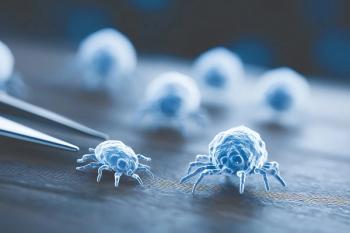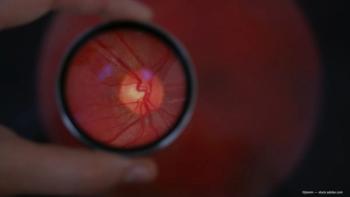
Ophthalmic NSAID significantly reduces postPRK pain
Ophthalmic
Postoperative treatment with nepafenac 0.1% ophthalmic suspension (Nevanac, Alcon Laboratories) significantly reduces pain after PRK without delaying re-epithelialization, reported Charles D. Reilly, MD, at Refractive Surgery 2006.
Dr. Reilly and colleagues at Wilford Hall, Lackland Air Force Base, San Antonio, investigated the efficacy and safety of nepafenac for improving patient comfort after PRK in a prospective, placebo-controlled, double-masked, randomized study.
Sixty-six patients undergoing bilateral surgery were enrolled. Fellow eyes were randomly selected to treatment with nepafenac or balanced salt solution (BSS). The patients were instructed to instill the drops three times a day for 2 days postoperatively after administering all other medications. Patients were evaluated at daily follow-up visits for 4 days.
Data collected included epithelial defect size and subjective pain rating using a scale of 0 to 10. Mean pain scores were significantly less in the nepafenac eyes compared with the BSS eyes on day 1 (0.76 versus 1.68) and day 2 (1.26 versus 2.23) after surgery. There was no significant difference in mean pain scores between treatments on day 3 (0.59 versus 0.69).
All eyes had healed by day 4 after surgery and were pain-free.
The U.S. Air Force approved laser refractive surgery in August 2000, and we perform all types of procedures, but the majority are surface ablation. Pain is the main drawback of PRK, and the results of this study show that postoperative nepafenac helps to minimize that problem, said Dr. Reilly.
Newsletter
Don’t miss out—get Ophthalmology Times updates on the latest clinical advancements and expert interviews, straight to your inbox.








































